When it comes to squeezing every ounce of power out of your 2JZ engine, the fuel system is the unsung hero. You can’t just slap on a turbo and call it a day. The fuel injectors, pumps, and rails all need to work in harmony to feed your beast the right amount of fuel at the right time. Think of it like a well-rehearsed band: if one player is off, the whole performance suffers. Upgrading these components isn’t just about adding bigger parts; it’s about matching them perfectly to your power goals and driving style.
For example, if you’re aiming for a modest 400 horsepower build, your fuel system needs will be vastly different than someone chasing 1000+ horsepower. The injectors must deliver fuel precisely, pumps have to maintain steady pressure, and rails need to support the flow without bottlenecks. Neglecting any one of these can lead to lean conditions, misfires, or even engine damage. It’s a balancing act that requires both knowledge and quality parts.
One thing I’ve learned from personal experience is that reliability matters just as much as raw power. It’s tempting to go for the biggest injectors and highest-flow pumps right away, but that can backfire if the rest of your setup can’t keep up. Sometimes, a well-chosen mid-range upgrade paired with proper tuning will give you smoother, more consistent power without headaches down the road.
In short, upgrading the 2JZ fuel system is about smart choices and understanding what each component brings to the table. It’s not just about throwing parts together; it’s about crafting a system that breathes life into your engine and keeps it running strong under pressure. Ready to dive deeper? Let’s break down each piece and find out what makes the best injectors, pumps, and rails tick for your 2JZ build.
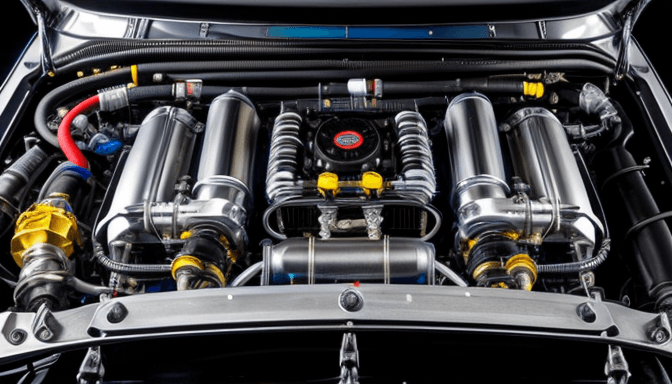
How to Choose the Right Size Fuel Injectors for Your Power Goals
Picking the right fuel injectors for your 2JZ build can feel like trying to find a needle in a haystack. But here’s the deal: the size of your injectors directly impacts how well your engine breathes and performs. Too small, and your engine starves for fuel under boost—leading to lean conditions and potential damage. Too big, and you risk flooding the engine or struggling with poor drivability at low throttle. So, how do you nail the perfect size? It all boils down to matching injector flow rates to your horsepower goals.
Think of fuel injectors as the engine’s feeding system. If your 2JZ is aiming for a modest 400 horsepower, you don’t need injectors that can flood a 1000HP monster. On the other hand, if you’re chasing over 800 horsepower, those small injectors won’t cut it. A good starting point is to calculate the injector size based on your target horsepower and fuel type. The formula is simple but effective:
Injector Size (cc/min) (Horsepower x BSFC) / (Number of Injectors x Duty Cycle)
Here, BSFC (Brake Specific Fuel Consumption) is a measure of how much fuel your engine uses per horsepower. For a turbocharged 2JZ, a BSFC of around 0.55 is typical. Duty cycle refers to how long the injector stays open during each cycle—usually maxed around 80% for reliability.
Let’s say you want 600 horsepower on pump gas with six injectors. Plugging in the numbers, you get something around 650cc/min injectors. This size ensures enough fuel flow without pushing the injectors to their limits, which keeps your setup smooth and responsive.
But numbers aren’t everything. Real-world experience matters too. When I upgraded my own 2JZ, I went with 750cc injectors. Why? Because I planned to add more boost later. It gave me breathing room for future tweaks without swapping injectors again.
Also, consider injector quality and brand reputation. A well-known injector from ID, Denso, or Bosch can deliver consistent spray patterns and reliable atomization, which is just as important as size.
In summary, choosing the right injector size is a balance. It’s about matching your power goals, fuel type, and future plans while keeping your engine happy and healthy. Don’t just pick injectors off the shelf—think ahead, calculate, and choose wisely. Your 2JZ will thank you with smooth power and reliability.
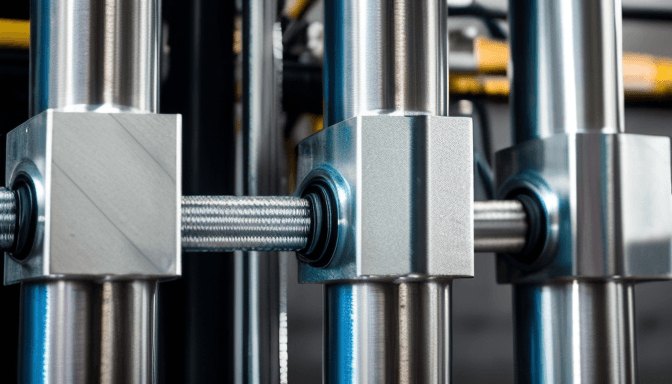
Best High-Flow Fuel Pumps for Boosted 2JZ Setups
When you’re pushing your 2JZ engine beyond its stock limits, the fuel system becomes your lifeline. Imagine trying to water a garden with a tiny hose while the plants are screaming for a flood—that’s what happens if your fuel pump can’t keep up. For boosted 2JZ builds, a high-flow fuel pump isn’t just an upgrade; it’s a necessity. It ensures your engine gets the steady, reliable fuel delivery it demands under heavy boost and high RPMs.
Choosing the right pump means balancing flow rate and pressure. Too little flow, and your engine starves—leading to lean conditions that can wreck your pistons. Too much pressure without proper regulation? That’s a recipe for flooding and wasted fuel. The best high-flow pumps for 2JZ setups typically offer flow rates ranging from 255 to 340 liters per hour (LPH), enough to support anywhere from 600 to 1000+ horsepower.
Brands like Walbro, AEM, and DeatschWerks have built solid reputations in this space. For example, the Walbro 450 is a popular choice because it reliably delivers high volume without overheating, even during extended track sessions. Meanwhile, the AEM 320 pump is praised for its quiet operation and consistent pressure, making it ideal for street-driven boosted builds.
But it’s not just about the pump itself. How you install it matters just as much. Fuel pumps need proper wiring and a quality fuel filter upstream to prevent clogging. Plus, a well-designed fuel pump hanger or in-tank setup can drastically improve pump longevity and performance. Think of it as giving your pump the right environment to breathe and work hard without burning out.
Here’s a quick look at some popular high-flow pumps and their typical applications:
| Fuel Pump Model | Flow Rate (LPH) | Recommended Power Range (HP) | Key Features |
|---|---|---|---|
| Walbro 450 | 255-300 | 600-1000+ | High reliability, track-proven, widely available |
| AEM 320 | 320 | 600-900 | Quiet operation, consistent pressure, street-friendly |
| DeatschWerks DW300 | 300 | 600-850 | Durable design, efficient flow, easy installation |
One thing to remember: your fuel pump is only as good as the rest of your fuel system. Pairing a high-flow pump with proper injectors, rails, and lines creates a balanced ecosystem that keeps your boosted 2JZ humming smoothly. Neglect one part, and you risk bottlenecks that kill power and reliability.
In the end, upgrading to the right high-flow fuel pump is like giving your 2JZ the fuel it craves to perform at its peak. It’s not just about brute force; it’s about consistent, clean delivery that lets you push limits without worry. So, pick wisely, install carefully, and watch your boosted beast come alive with every throttle stab.
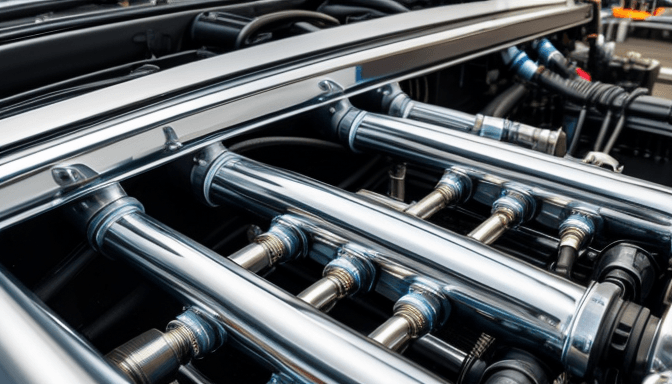
Top Fuel Rails for Supporting Big Injector Fitment
When it comes to upgrading your 2JZ fuel system, the fuel rails might not grab the spotlight like injectors or pumps, but they’re absolutely crucial—especially if you’re fitting big injectors. Think of fuel rails as the highways that deliver fuel to your engine’s injectors. If the highway is narrow or poorly designed, traffic jams happen. In this case, “traffic jams” mean inconsistent fuel flow, which can kill your engine’s performance and reliability.
Big injectors demand more fuel volume, and that means your fuel rails need to handle higher flow rates without pressure drops. Stock rails often choke the flow because they weren’t designed for oversized injectors. Upgrading to aftermarket rails engineered for high flow is a must if you want your 2JZ to breathe properly.
One of the most popular choices among enthusiasts is the Skunk2 Pro Series fuel rails. These rails are crafted from high-quality aluminum, offering a larger internal diameter and smooth internal finishes that reduce turbulence. What does this mean for you? Steadier fuel delivery, better atomization, and ultimately, more consistent power under boost.
Another solid contender is the Fuelab fuel rails, known for their durability and precision engineering. These rails come with multiple injector port options, making it easier to fit larger injectors without any hassle. Plus, their design focuses on minimizing pressure drop, which is key when you’re pushing your 2JZ past 600 horsepower.
Here’s a quick look at what makes a great fuel rail for big injectors:
- Material: Aluminum or billet construction for strength and heat resistance.
- Internal Diameter: Larger bore to support higher fuel volume.
- Injector Ports: Compatibility with various injector sizes and types.
- Pressure Stability: Design that prevents fuel pressure fluctuations.
Imagine trying to pour water through a straw versus a wide pipe. That’s the difference between stock and upgraded fuel rails. The wider, smoother path means your fuel pump and injectors can work at their best, without choking the flow. A poorly chosen fuel rail can create bottlenecks that lead to lean conditions or hesitation—problems you definitely want to avoid when tuning for power.
In my own experience, swapping to a high-quality fuel rail made a noticeable difference in throttle response and overall engine smoothness. It’s one of those upgrades that quietly works behind the scenes but pays off big when you push your 2JZ to the limit.
So, if you’re serious about fitting big injectors and squeezing every drop of power from your 2JZ, don’t overlook the fuel rails. They’re the unsung heroes that keep your fuel system flowing strong and steady.
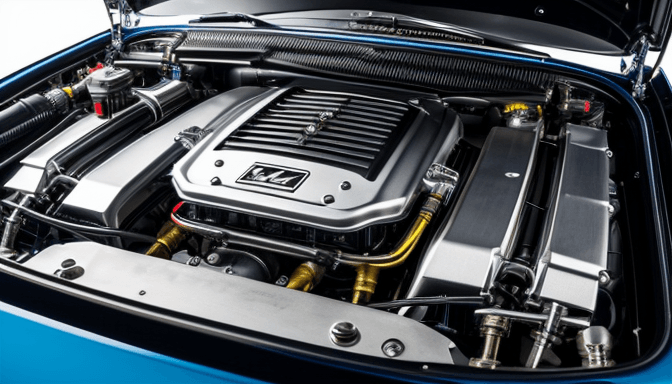
Dual vs Single Pump Setups: Which is Better for Your Build?
Choosing between a dual or single fuel pump setup for your 2JZ build can feel like standing at a crossroads. Both have their perks, but which one truly fits your goals? Let’s break it down without the fluff.
A single pump setup is straightforward. It’s simpler to install, easier to maintain, and usually costs less upfront. For builds aiming around 600-700 horsepower, a high-quality single pump often does the job perfectly. It delivers enough fuel without the extra complexity. Think of it like a reliable workhorse—steady and dependable.
Now, when you push past that 700HP mark, things start to change. Enter the dual pump setup. This configuration uses two pumps working together, which means more fuel volume and pressure. It’s like having a backup singer who’s just as strong as the lead—together, they create a powerful harmony. For 800HP and beyond, dual pumps can provide the extra fuel flow needed to keep the engine happy under boost.
But here’s the catch: dual pumps aren’t just about raw power. They also add complexity. You’ll need a proper wiring setup, a way to control both pumps effectively, and more attention during tuning. It’s a bit like juggling—more balls in the air means you need better coordination.
To help visualize this, here’s a quick comparison:
| Aspect | Single Pump | Dual Pump |
|---|---|---|
| Installation | Simple and quick | More complex, requires extra wiring |
| Cost | Lower initial cost | Higher cost due to extra parts |
| Fuel Delivery | Sufficient up to ~700HP | Supports 800HP and above |
| Maintenance | Less frequent and simpler | More components to monitor |
In my own experience, I started with a single pump on a 650HP 2JZ build. It was smooth sailing—no drama, no fuss. But when I cranked the boost and power closer to 900HP, the single pump started showing signs of strain. Switching to a dual pump setup felt like giving the engine a breath of fresh air. Fuel pressure stayed rock solid, and tuning became more predictable.
So, what’s the takeaway? If you’re building a moderate power 2JZ, a quality single pump can keep things simple and effective. But if you’re chasing serious power, a dual pump setup is often worth the extra effort and cost. It’s about matching your fuel system to your engine’s appetite—no more, no less.
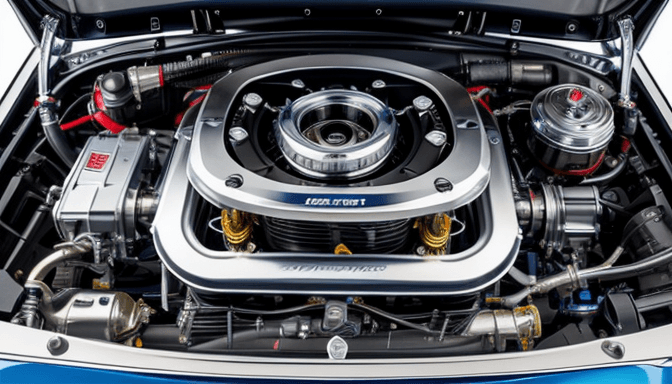
Fuel Pressure Regulators: Why They Matter in Tuning
When it comes to tuning your 2JZ engine for peak performance, the fuel pressure regulator often flies under the radar. But don’t be fooled—this little device is a silent hero in your fuel system. Think of it as the gatekeeper that keeps fuel pressure steady, no matter how wild your engine’s demands get. Without it, your finely tuned setup can quickly go off the rails, leading to lean conditions or flooding, both of which are nightmares for any tuner.
Imagine driving a race car where the fuel flow is a rollercoaster—sometimes too much, sometimes too little. That’s what happens without a reliable fuel pressure regulator. It maintains a consistent pressure, ensuring every injector delivers the right amount of fuel at exactly the right moment. This balance is crucial because even slight pressure fluctuations can cause your engine to hesitate, lose power, or worse, suffer damage.
But why does this matter so much in tuning? Well, tuning is all about precision. When you adjust your fuel maps, you’re telling the engine how much fuel to inject based on load, RPM, and boost. If the pressure isn’t stable, those maps become useless. It’s like trying to hit a moving target. A good fuel pressure regulator locks that target in place, making your tuning efforts effective and repeatable.
Most tuners prefer adjustable fuel pressure regulators because they offer control and flexibility. You can tweak the fuel pressure to match your injector size and power goals. For example, running a higher fuel pressure can help support larger injectors or extreme boost levels, but it needs to be dialed in carefully to avoid overwhelming the engine’s fuel system.
Here’s a quick breakdown of what a fuel pressure regulator does:
- Maintains steady fuel pressure: Prevents surges or drops that can disrupt fuel delivery.
- Improves tuning accuracy: Keeps fuel maps reliable by stabilizing injector flow.
- Protects engine health: Avoids lean or rich conditions that can cause damage.
In my own experience working on boosted 2JZ builds, swapping out a worn-out regulator for a high-quality adjustable one made a night-and-day difference. The engine ran smoother, responded better to throttle inputs, and the tuner had a much easier time dialing in the perfect fuel curve. It’s one of those upgrades that doesn’t grab headlines but quietly makes everything else work better.
So, if you’re serious about squeezing every drop of power from your 2JZ, don’t overlook the fuel pressure regulator. It’s not just a part—it’s the backbone of your fuel system’s consistency and the key to unlocking stable, reliable tuning.
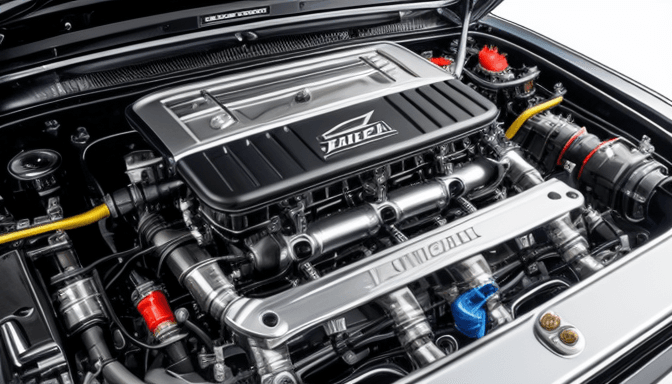
Upgrading Fuel Lines and Fittings for Maximum Flow
When it comes to squeezing every ounce of power from your 2JZ, upgrading the fuel lines and fittings isn’t just an option—it’s a must. Think of fuel lines as the arteries of your engine. If they’re too narrow or weak, your engine starves for fuel just when it needs it most. You wouldn’t want your heart clogged, right? The same idea applies here. Stock lines often can’t keep up when you push your 2JZ beyond its limits.
Swapping out those factory rubber hoses for high-quality braided stainless steel lines can make a world of difference. Not only do they resist heat and pressure better, but they also minimize expansion under high fuel pressure. This means your fuel delivery stays rock solid, no matter how hard you’re pushing the throttle. Ever felt that annoying hesitation or stumble during acceleration? That’s often the fuel lines struggling to keep pace.
Fittings play a huge role too. Cheap or mismatched fittings can cause leaks or restrict flow—both of which kill performance and reliability. Upgrading to AN (Army-Navy) style fittings ensures a tight, leak-proof seal and smooth fuel flow. Plus, they’re designed to handle high pressures common in boosted 2JZ setups. It’s like upgrading from garden hose connectors to professional-grade plumbing.
Here’s a quick look at why upgrading fuel lines and fittings matters:
- Improved fuel flow: Larger diameter lines reduce restrictions.
- Higher pressure tolerance: Braided lines and AN fittings handle boost demands.
- Durability: Resistant to heat, chemicals, and wear.
- Leak prevention: Proper fittings mean no fuel loss or dangerous spills.
But don’t just upgrade blindly. Match your line sizes and fittings with your fuel pump and injector specs. Oversizing can cause sluggish fuel pressure response, while undersizing chokes your system. It’s a balance, and dialing it in can feel like tuning a fine instrument. I remember swapping to a 10AN line setup on my own 2JZ build—it instantly smoothed out fuel delivery and eliminated those annoying fuel pressure drops under boost.
In the end, upgrading your fuel lines and fittings isn’t glamorous, but it’s critical. It’s the silent workhorse behind consistent power delivery and engine health. Neglect this, and you risk losing precious horsepower or worse, damaging your engine. So, invest in quality lines and fittings. Your 2JZ will thank you with smooth, reliable power every time you hit the gas.
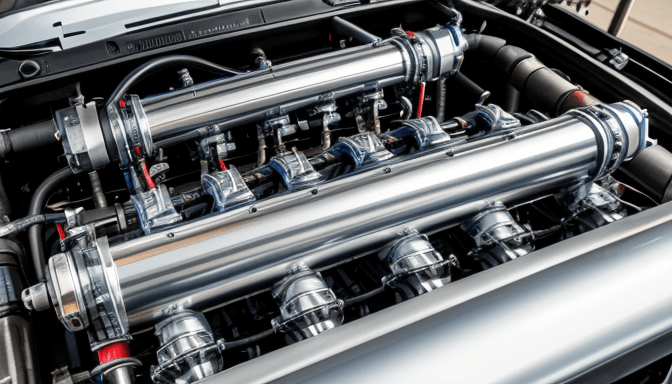
ID, Denso, and Bosch: Trusted Brands in 2JZ Fueling
When it comes to upgrading your 2JZ fuel system, choosing the right injector brand is like picking the right tool for a delicate job—it can make or break your build. **ID, Denso, and Bosch** stand out as the go-to names, each bringing something unique to the table. These brands aren’t just popular by chance; they’ve earned their reputation through years of reliability and performance in high-demand setups.
Take ID Injectors, for example. They’re often the first choice for many tuners because of their **precision and consistency**. If you want injectors that deliver fuel smoothly without hiccups, ID injectors are like that dependable friend who never lets you down. They handle big power goals while maintaining excellent spray patterns, which means your engine breathes easier and runs cleaner.
Then there’s Denso, a brand that’s been around the block and proven itself time and again. Denso injectors are known for their **durability and adaptability**. They fit well into the 2JZ platform and provide reliable fuel delivery even under extreme conditions. If your build is pushing the limits, Denso’s robust design helps keep things steady, preventing those annoying lean spots that can kill performance or worse, damage your engine.
And let’s not forget Bosch, a name synonymous with quality in the automotive world. Bosch injectors bring **cutting-edge technology** to the table, offering efficient atomization and consistent flow rates. They’re a smart pick if you want a balance between performance and longevity. Many enthusiasts swear by Bosch for their smooth throttle response and ease of tuning, which can be a lifesaver when dialing in your fuel map.
Choosing between these brands often boils down to your specific needs and budget. But here’s a quick snapshot to help you decide:
| Brand | Strengths | Best For |
|---|---|---|
| ID Injectors | Precision, consistent spray pattern | High-performance builds needing reliable fuel delivery |
| Denso | Durability, adaptability to extreme conditions | Heavy-duty boosted setups and long-term reliability |
| Bosch | Advanced atomization, smooth throttle response | Balanced builds looking for efficiency and tuning ease |
In the end, these brands have one thing in common: they help your 2JZ engine run strong and smooth. Think of them as the backbone of your fuel system upgrade. Without solid injectors, even the best pumps and rails won’t get you far. So, pick wisely, and your engine will thank you with power and reliability every time you hit the gas.
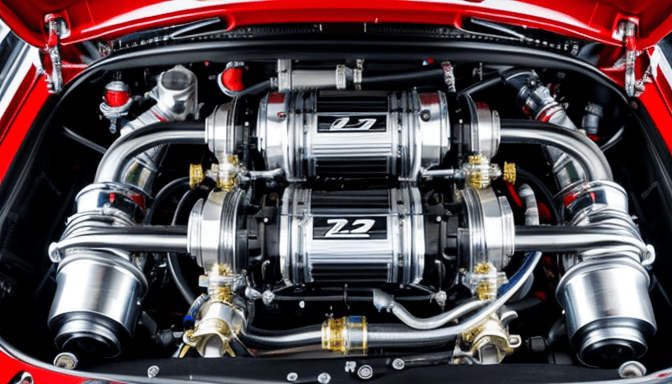
Fuel System Configurations for 600HP, 800HP, and 1000+HP
When it comes to fueling your 2JZ engine at different power levels, there’s no one-size-fits-all solution. The fuel system needs to match the horsepower you’re aiming for, or you risk running lean, losing power, or worse—damaging your engine. Let’s break it down by power tiers so you can see what makes sense for your setup.
For a build targeting around 600 horsepower, you’re in a sweet spot where a good quality single high-flow fuel pump paired with injectors in the 1000cc/min range usually does the trick. This setup provides enough fuel without overcomplicating things. You want injectors that deliver consistent spray patterns and pumps that maintain steady pressure, especially under boost. It’s like having a strong heart pumping just the right amount of blood—efficient and reliable.
Stepping up to 800 horsepower, things get a bit more demanding. At this level, you often need to upgrade to larger injectors, somewhere around 1200cc/min or more, and a more robust pump or even a dual pump setup. Why? Because the engine’s thirst grows, and the fuel system has to keep pace without hesitation. Imagine trying to fill a bigger bucket with the same small hose—you’ll end up frustrated and short on fuel. Dual pumps or high-capacity single pumps ensure the fuel flow is constant, even when you’re pushing hard on the throttle.
Now, if you’re chasing the 1000+ horsepower club, things get serious. Fueling here is a whole different beast. You’re looking at large injectors—1500cc/min or more—and dual or even triple pump setups to feed the beast. The fuel rails have to be specially designed to handle big injectors without starving any cylinder. Plus, upgraded fuel lines and fittings become non-negotiable to prevent any bottlenecks. This is the realm where precision meets power. Every drop counts, and your fuel system has to deliver flawlessly to keep the engine alive and kicking.
| Power Level | Injector Size (cc/min) | Fuel Pump Setup | Additional Notes |
|---|---|---|---|
| 600 HP | ~1000 | Single high-flow pump | Reliable, efficient, cost-effective |
| 800 HP | 1200+ | Dual pumps or high-capacity single pump | Ensures steady fuel delivery under boost |
| 1000+ HP | 1500+ | Dual or triple pump setups | Requires upgraded rails, lines, and fittings |
One thing to remember: it’s not just about throwing bigger parts at the problem. The fuel system has to be tuned and balanced perfectly. Think of it like an orchestra—each component must play its part in harmony. Too much fuel? Your engine sputters. Too little? It starves. Getting this balance right is what separates a reliable high-power build from a headache-filled nightmare.
So, whether you’re cruising at 600HP or pushing beyond 1000HP, your fuel system configuration deserves the same love and attention as your turbo or camshaft. It’s the lifeline of your 2JZ, and with the right setup, you’ll enjoy smooth, powerful, and consistent performance every time you hit the gas.
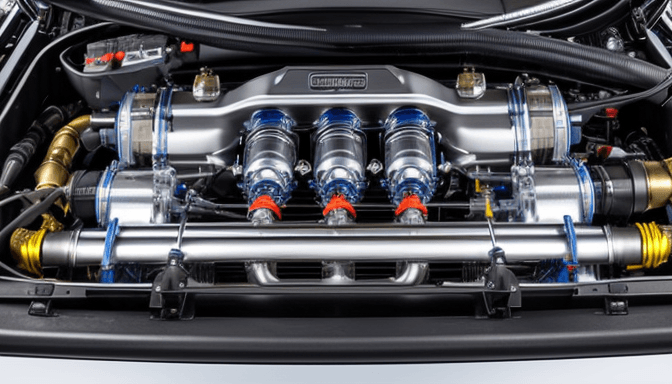
Common Fuel Delivery Issues and How to Prevent Them
When you’re pushing your 2JZ to its limits, fuel delivery isn’t just a detail — it’s the lifeline of your engine. Imagine trying to sprint with a clogged oxygen mask; that’s what a blocked fuel line or failing injector feels like to your engine. Common issues like fuel starvation, inconsistent pressure, or clogged injectors can sneak up on you and kill your power output faster than you’d expect.
One of the biggest headaches is fuel starvation. This happens when your pump or lines can’t keep up with the engine’s demand, especially under heavy boost. Your engine will hesitate, misfire, or worse, run lean and risk serious damage. The fix? Upgrade your fuel pump and lines to match your power goals. Don’t just guess — calculate your horsepower target and choose components that deliver a bit more than you need. It’s like having a safety net for your fuel supply.
Another sneaky problem is fuel pressure fluctuations. Ever felt your engine stumble at wide-open throttle or during hard pulls? That’s often a sign your pressure regulator isn’t holding steady. A bad regulator or a worn-out fuel pump can cause pressure to spike or drop, confusing your ECU and throwing off your air-fuel mix. Regularly check your fuel pressure with a gauge and replace your regulator if you notice wild swings. Stability here means smoother power and fewer headaches at the dyno.
Let’s talk about clogged injectors. Over time, dirt, varnish, and deposits build up inside injectors, choking off flow and causing uneven spray patterns. This leads to rough idles and poor throttle response. A simple yet effective prevention is using high-quality fuel and periodic cleaning with injector cleaners or professional ultrasonic services. Think of it as a spa day for your injectors — they’ll thank you with better atomization and consistent fueling.
Fuel leaks might seem obvious, but they’re often overlooked until they cause a fire hazard or a major drop in fuel pressure. Always inspect your fuel lines and fittings for cracks, wear, or loose clamps. Upgrading to braided stainless steel lines and AN fittings can save you from nasty surprises and keep your system leak-free under pressure.
In short, keeping your 2JZ’s fuel system healthy is about vigilance and smart upgrades. Watch for these common issues and tackle them head-on. Your engine will reward you with reliable power and peace of mind on every run.
Frequently Asked Questions
- How do I choose the right fuel injector size for my 2JZ engine?Picking the perfect injector size boils down to your horsepower goals. Think of injectors as the fuel gatekeepers—too small, and your engine starves; too big, and you risk poor drivability. A good rule of thumb is to calculate your horsepower target and match it with injector flow rates, ensuring your 2JZ gets just the right amount of fuel for peak performance without wasting resources.
- What makes high-flow fuel pumps essential for boosted 2JZ setups?When you crank up the boost, your engine demands more fuel—fast and steady. High-flow fuel pumps act like a firehose, delivering consistent pressure and volume to keep the engine fed under pressure. Without them, you risk lean conditions that can cause serious damage. So, upgrading your pump is like giving your 2JZ a fuel system that can keep pace with its hunger for power.
- Why should I upgrade fuel rails when installing bigger injectors?Fuel rails are the highways for fuel delivery. Stock rails can bottleneck when larger injectors are installed, restricting flow and starving your engine. Upgraded rails are designed with wider passages and better materials to handle big injectors, ensuring smooth and even fuel distribution. Think of it as widening the freeway to avoid traffic jams on your fuel system.
- Is a dual fuel pump setup better than a single pump for my 2JZ?It depends on your power goals and reliability needs. Dual pump setups provide redundancy and increased fuel volume, perfect for ultra-high horsepower builds. Single pumps are simpler and less costly but might struggle at extreme power levels. If you’re chasing 800+ horsepower or more, dual pumps can be a game-changer; for moderate builds, a quality single pump often does the trick.
- How important is a fuel pressure regulator in tuning my 2JZ?Fuel pressure regulators are the unsung heroes of a stable fuel system. They maintain consistent fuel pressure regardless of engine demand, which is crucial for precise tuning. Without a solid regulator, your engine might experience fuel surges or starvation, leading to erratic performance or even damage. Simply put, they’re the fuel system’s thermostat, keeping things balanced.
- Do I need to upgrade fuel lines and fittings when increasing fuel flow?Absolutely! Stock fuel lines and fittings can become choke points when you boost fuel flow. Upgrading to larger diameter lines and high-quality fittings ensures your fuel delivery is unrestricted and safe. It’s like upgrading from a garden hose to a firehose—your 2JZ needs that kind of flow to perform at its best without risking leaks or pressure drops.
- Which injector brands are most reliable for 2JZ fueling?ID, Denso, and Bosch are the heavy hitters in the 2JZ world. They’re trusted for their precision, durability, and consistent flow rates. Choosing injectors from these brands gives you peace of mind that your fuel delivery is both accurate and reliable, which is critical when pushing your engine hard.
- What fuel system setup do you recommend for 600HP, 800HP, and 1000+HP 2JZ builds?For a 600HP setup, a quality single high-flow pump with 1000cc injectors and upgraded rails usually suffices. At 800HP, consider dual pumps, 1200cc+ injectors, and reinforced fuel lines. When pushing past 1000HP, dual pumps with high-capacity injectors (1500cc+), top-tier rails, and professional tuning become essential. Matching your fuel system to power goals is like tailoring a suit—it needs to fit perfectly.
- What common fuel delivery problems should I watch out for in a 2JZ?Watch for fuel starvation, pressure drops, and injector clogging. These issues can cause hesitation, misfires, or even engine damage. Regular maintenance, proper component selection, and ensuring your fuel system is balanced for your power level are key to preventing these headaches. Think of it as keeping your fuel system happy so your engine can roar.